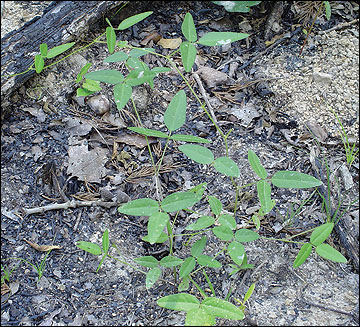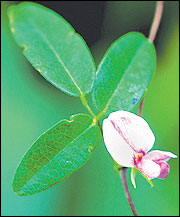Reviewed
Milkpea
- Galactia volubilis
Forb
Leaves and stems are hairy. Vining growth often causes milk pea to climb other plants.
Scott Sudkamp, Missouri Department of Conservation
Description
This herbaceous legume demonstrates a hairy surface on the top of the trilobed leaf; the stems are also hairy. Milkpea can be found throughout most of the southern Midwest on rocky glades and open woods. Seedpods are about 2-1/2 inches long.
Bloom period
July to September
Use by bobwhites
Milkpea seeds are readily eaten by bobwhites. They may serve as a component of brood cover as well.





